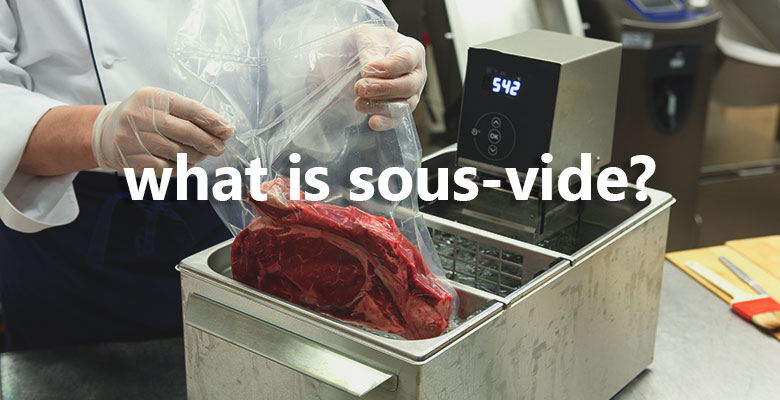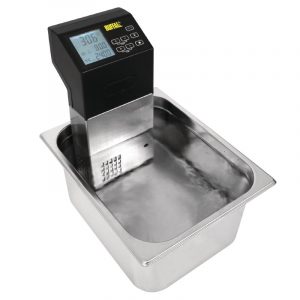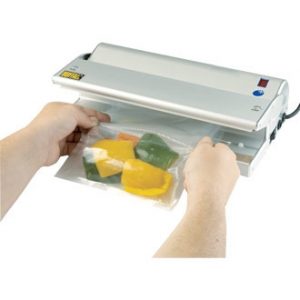
If you are looking to improve the flavour, texture and overall quality of your signature dishes.
But what does sous-vide even mean and why would you cook using this technique?
Sous-vide — or French for “under vacuum” was originally developed in France by Georges Pralus during the early 1970’s.Pralus developed and refined this process alongside a food scientist, the pair joined forces to try and find the perfect method of producing the French delicacy — “foie gras”.
Though Pralus adopted the method and refined the techniques, but it was Sir Benjamin Thompson, Count Rumford who first described the technique dating back as far as 1799. Although his method varied slightly from the modern French equivalent.
In some respects sous-vide cooking is very similar to more traditional poaching, this incredibly innovative cooking technique sees food cooked in water at constant low temperatures until it’s perfectly cooked through.
No other cooking method produces such consistently excellent textures and flavours, or maintains the natural integrity of foods so well.
Sous Vide is a professional method of cooking food sealed in airtight vacuum packed bags in a water bath for a long time — 72 hours is not unusual — at an accurately determined temperature much lower than normally used for cooking, typically around 60°C or 140°F.
The intention is to maintain the integrity of the ingredients and achieve a very precise control of cooking.
It differs from conventional cooking because the raw food is sealed in an oxygen free environment and the food is cooked using precisely controlled heating at a variation of only ±0.1°C.
From a culinary viewpoint the exclusion of air is secondary, but this has practical importance: it allows cooked food to be stored, still sealed and refrigerated, for considerable times, which is especially useful for the catering industry; and it excludes oxygen from food that requires long cooking and is susceptible to oxidation, e.g. fat on meat which may become rancid with prolonged exposure to air.

Sous Vide is a precision cooking technique which requires precise temperature control.
This can only be achieved by using a water bath that allows exact thermal transfer of energy, stable temperatures and quick heat transfer into vacuum pouches.
Precise cooking is especially important when cooking fish, meat and poultry.
Consider the problem of cooking a 280g fillet steak to medium-rare.
Cooking the steak on a grill at over 280° C until the centre comes up to 53° C will result in everything but the very centre being overcooked, but with the Sous Vide method of water bath cooking this is not a problem.
The steak is poached in the pouch in a water bath at 54° C for 60 minutes and then seared in a hot pan to finish.
The result is a great crust with same done-ness at the edge as in the centre, meaning perfect steak and meats with little to no effort or stress placed upon kitchen staff.
Whats Needed?

The sous vide method is today used in a huge variety of sites as this type of cooking becomes more and more popular.
In order to do this method you will require a form of water bath as featured in our sous vide equipment section on the web site.
These units offer controlled cooking at a variety of temperatues.
In addition to these units you will require a vacuum packing machine.
Vacuum packing is a method of packaging, storing, presenting and then cooking food.
Appropriate types of food are stored in an airless environment, usually in an air-tight packaging to reduce the growth of microorganisms.
The vacuum environment removes atmospheric oxygen, protecting the food from spoiling by limiting the growth of aerobic bacteria or fungi, and preventing the evaporation of volatile components.
Vacuum packaging food can extend its life by up to 3-5 times.
The vacuum packer has also become an essential piece of kitchen kit for many chefs and caterers who gain specific benefits in terms of advanced food preparation, portion control, spread workload, reduced food wastage, lower food costs, safer food storage, higher standards of food hygiene and sous vide or water bath cooking.
Key advantages can be gained in the kitchen from vacuum packing and storing pre-prepared foods such as fresh or sliced meats, fish, poultry, vegetables, fruits, salads and cheeses for several days without any deterioration in quality and pre-portioning soups, sauces and entire dishes to reduce food wastage.
All these benefits contribute to increasing the efficiency of the kitchen and the possibility of offering a wider choice on the menu.
All food – both cooked and raw – can be hygienically stored in vacuum pouches for storage in one refrigerator or effortless transported between locations thus minimising the risks of cross-contamination.
Moreover, vacuum packing has advanced over the years and progressed from purely being a shelf life extender and portion control tool into a forward thinking cooking technique in its own right.
Vacuum packing machines allow the cooking technique by which ingredients are sealed in a pouch under vacuum, that are subsequently cooked at precisely defined temperature to reach a desired result.
This gentle cooking method has proven to be an innovative tool for a growing number of leading chefs, and continues to grow in popularity.
This method is one of the most important culinary innovations of modern times and heralds in a new era of gastronomy, including new cooking times for service that keeps meat tender, fish succulent no matter how long it’s been cooked.
